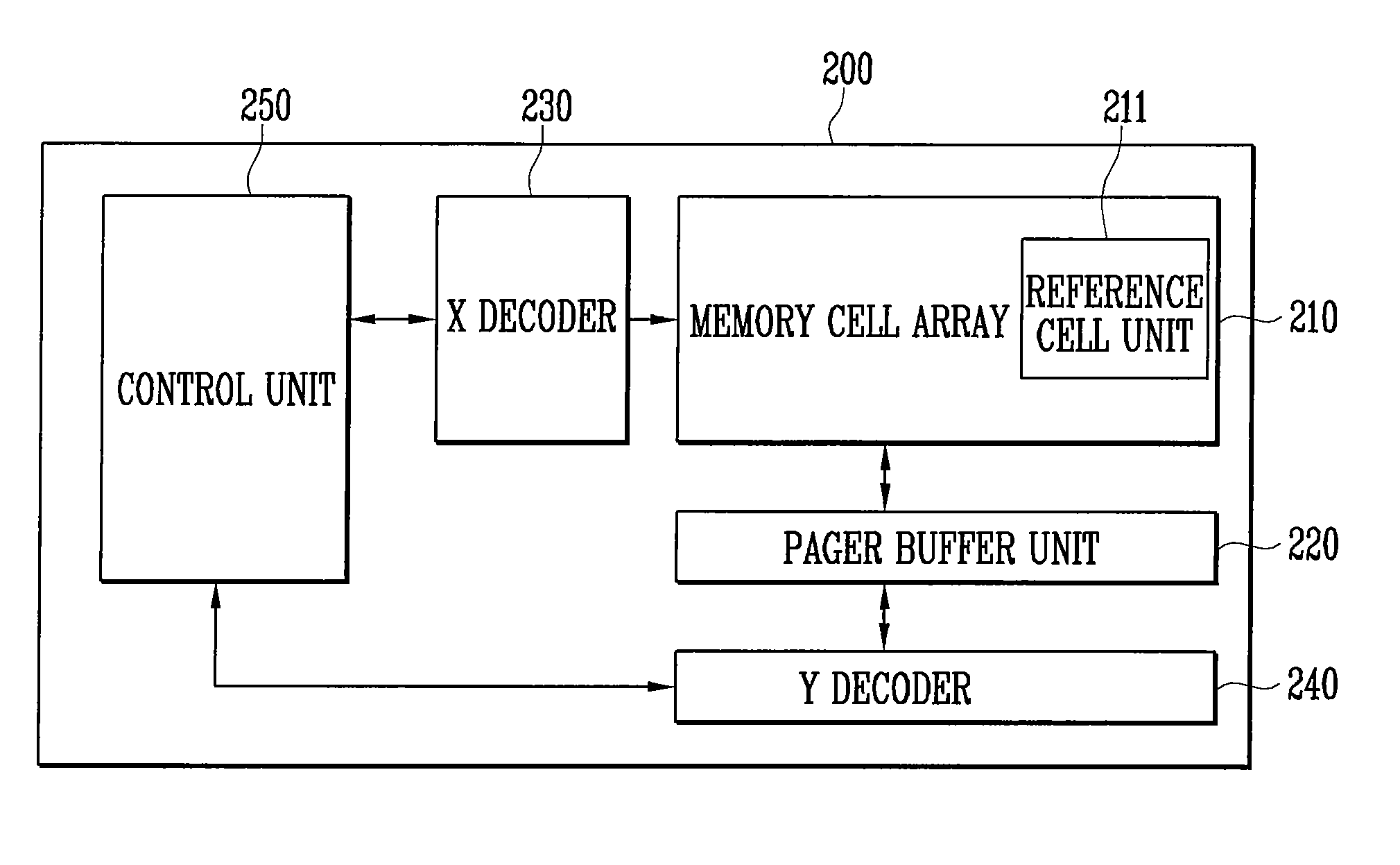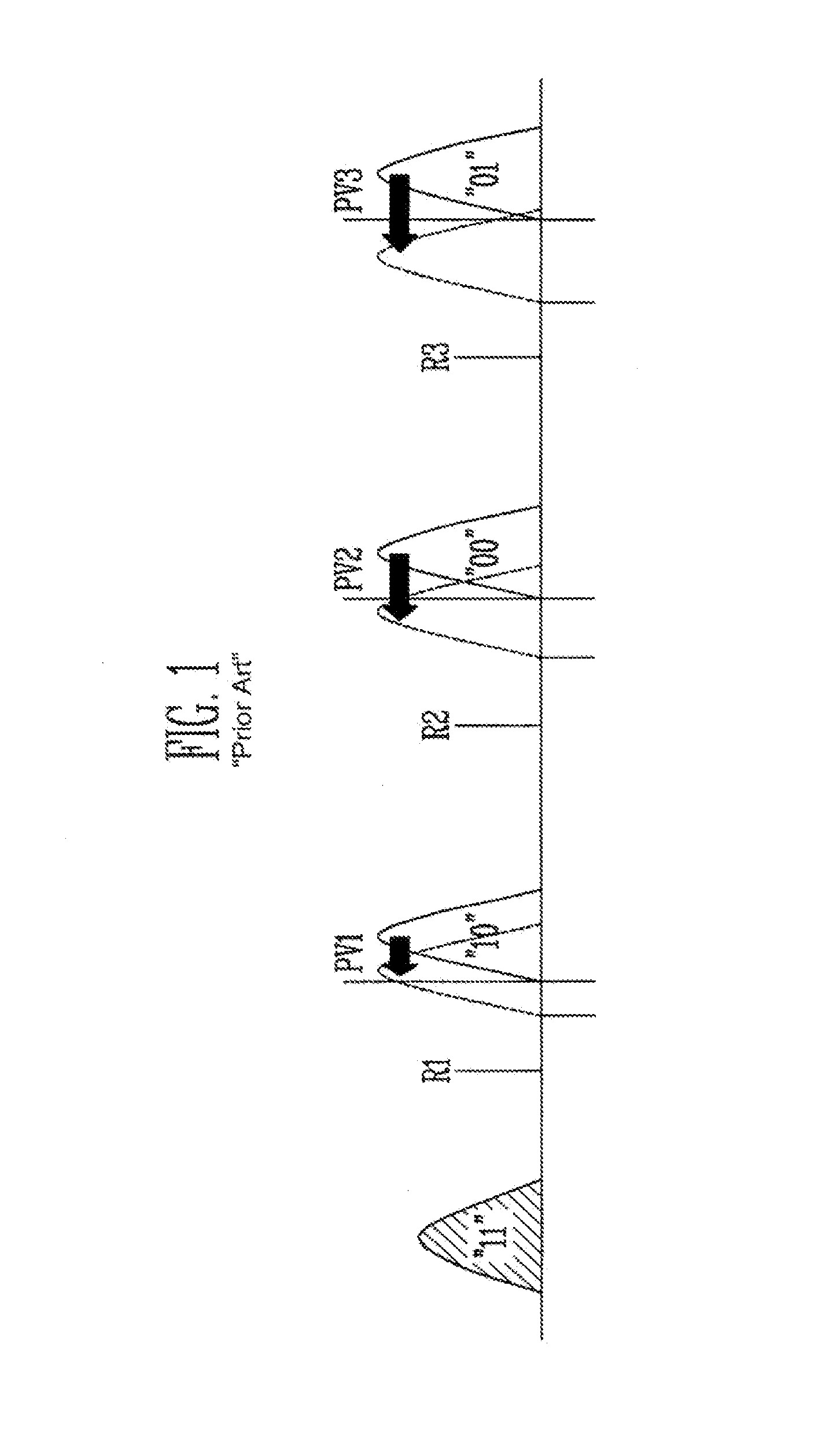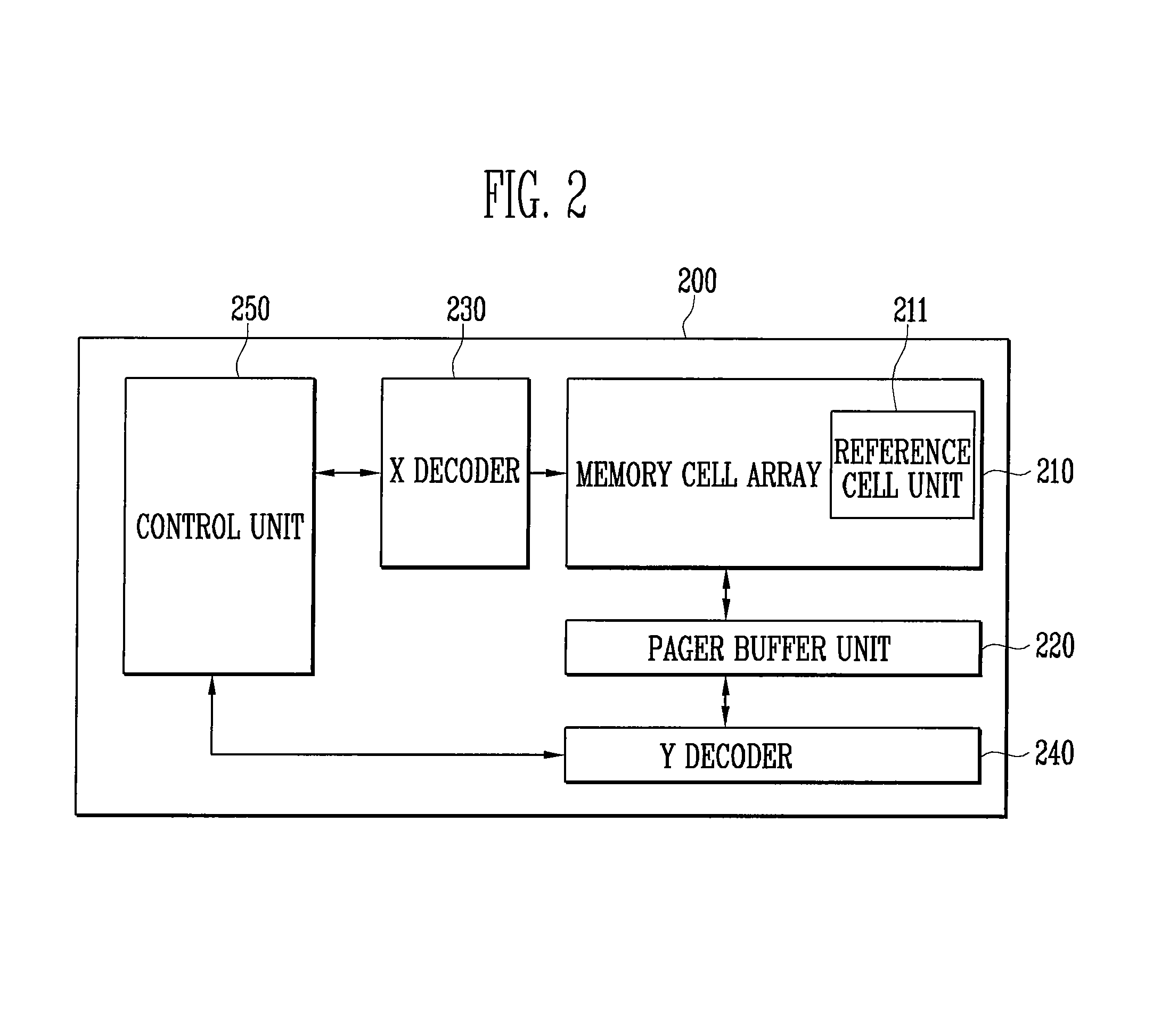Non-volatile memory device and self-compensation method thereof
a non-volatile memory and threshold voltage technology, applied in static storage, digital storage, instruments, etc., can solve problems such as read errors, increased trap charges, and errors in flash memory
- Summary
- Abstract
- Description
- Claims
- Application Information
AI Technical Summary
Benefits of technology
Problems solved by technology
Method used
Image
Examples
Embodiment Construction
[0033]Specific embodiments according to the present patent will be described with reference to the accompanying drawings.
[0034]Referring to FIG. 2, a NAND flash memory 200 according to a first embodiment of the present invention includes a memory cell array 210 having memory cells for storing data, an X decoder 230 and a Y decoder 240 for selecting the memory cells of the memory cell array 210 in response to an input address, a page buffer unit 220 having page buffers for programming data into the memory cell array 210 or reading stored data, a control unit 250 for controlling programming and reading by controlling the memory cell array 210, the page buffer unit 220, the X decoder 230 and the Y decoder 240. It is to be noted that FIG. 2 only shows a partial construction of the NAND flash memory according to a first embodiment of the present invention.
[0035]The memory cell array 210 includes a plurality of blocks having a plurality of memory cells, and includes a reference cell unit ...
PUM
 Login to View More
Login to View More Abstract
Description
Claims
Application Information
 Login to View More
Login to View More - R&D
- Intellectual Property
- Life Sciences
- Materials
- Tech Scout
- Unparalleled Data Quality
- Higher Quality Content
- 60% Fewer Hallucinations
Browse by: Latest US Patents, China's latest patents, Technical Efficacy Thesaurus, Application Domain, Technology Topic, Popular Technical Reports.
© 2025 PatSnap. All rights reserved.Legal|Privacy policy|Modern Slavery Act Transparency Statement|Sitemap|About US| Contact US: help@patsnap.com



